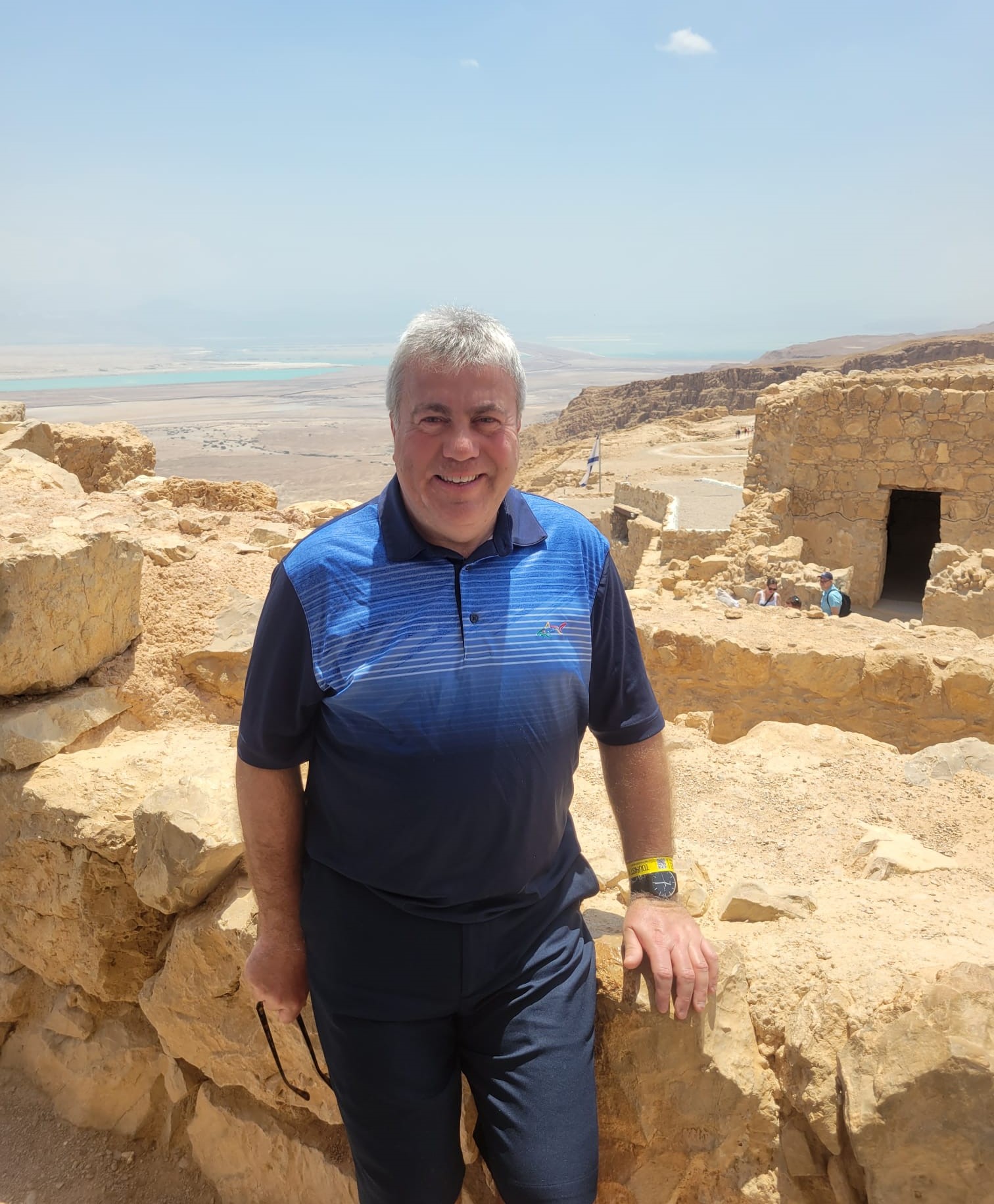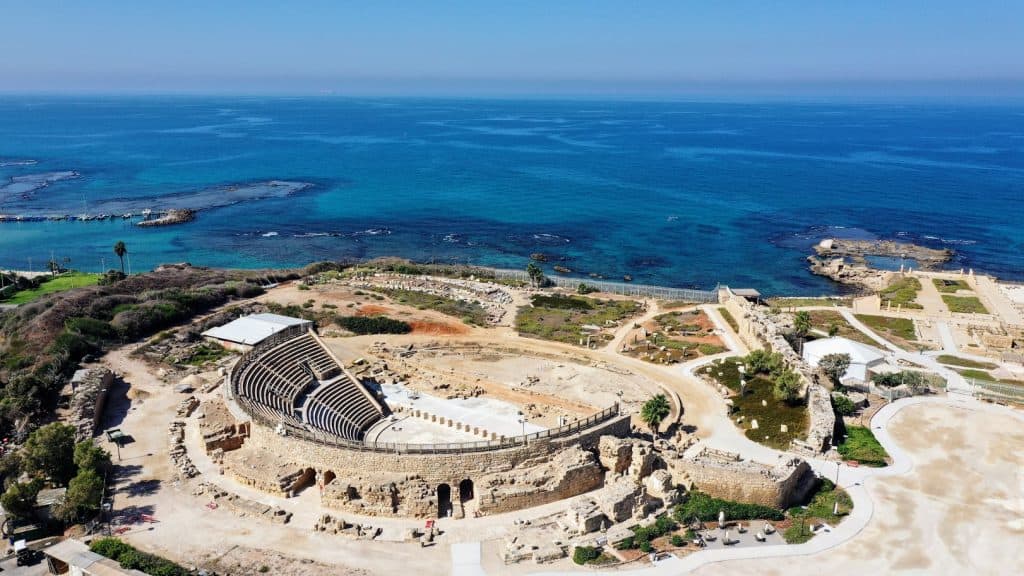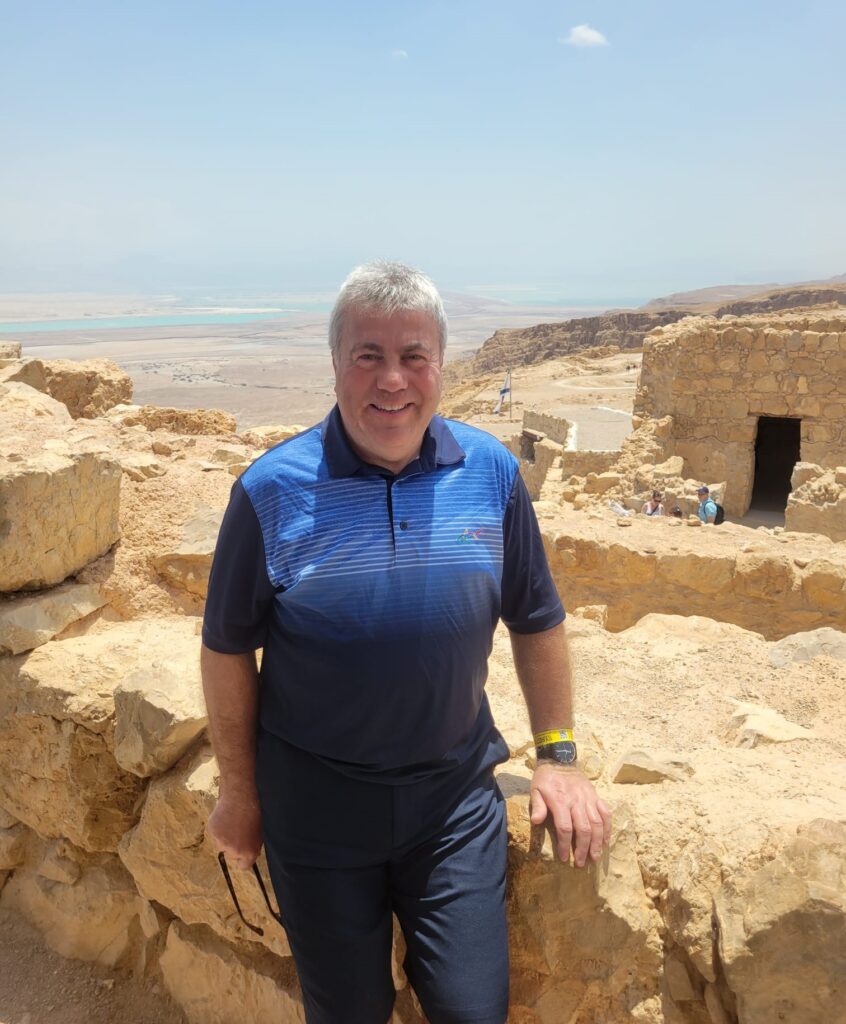✡️It’s never too late to visit Israel for the first time
#late #visit #Israel #time
[ad_1]
It’s never too late to visit Israel for the first time
▶️Watch the Video
[ad_2]
I was beginning to wonder if someone up there didn’t want me to experience the unique sights and sounds of the Holy Land in my lifetime.
I had been part of a controversial and historic trip to Tel Aviv in my role as a sportswriter for the Press Association when I covered Chelsea’s infamous UEFA Cup tie back in 2001. On that occasion, six high-profile Blues players declined to travel to face Hapoel Tel Aviv, as they felt it was too great a security risk, coming a month after 9/11. I had no such concerns about my safety. However, unfortunately for me it was a whistlestop visit and my workload meant I saw only an airport, a football stadium and a hotel room.
I must confess that growing up I’d never really had the urge to do the ‘Israel thing’, but that changed when I hit my 50s, and I felt a calling, so I booked a full tour. My trip was due to take place in 2020 but owing to the Covid-19 pandemic it was cancelled.
Get The Jewish News Daily Edition by email and never miss our top stories
Free Sign Up
Not to be beaten, I rebooked for May 2023, just after Israel would celebrate its 75th birthday, but even then, it was touch and go for a while after two terrorist attacks in April meant the Foreign Office might recommend against travelling there. My perseverance paid off, and when my trip finally came it was worth the wait.
I compiled a shortlist of what I believed were the ‘must see’ places, which included Masada, the Western Wall, the Dead Sea and Yad Vashem, the Holocaust Museum.

Neil enjoys the view atop Masada
My first stop was Masada, and the thing that occurred to me early on was that most of these ‘must see’ places were associated with Jews suffering – but don’t let that put you off, because it epitomises our history.
The siege of Masada was one of the final events in the first Jewish-Roman war, almost 2,000 years ago. As defeat neared for the Jewish zealots, rather than suffer enslavement or death at the hands of the Roman army, each man killed his own wife and children before they too perished.
Whether or not the story is totally accurate, the real wonder for me was the ability of man to build this fortress with his bare hands on a plateau high above the Dead Sea. I tried to imagine what life would have been like for those living there under the rule of King Herod, with a three-tiered palace complex, Roman baths, and even a swimming pool – luxurious by anyone’s standards. It is worth seeing, and unless you are young and fit, I recommend taking the cable car to the top of this UNESCO World Heritage Site to do so.

Mud, mud, glorious mud for Neil in the Dead Sea
From Masada my tour took us on a 20-minute drive to the Dead Sea, the lowest point on earth. The highly saline water has a unique composition of minerals and therapeutic salts, and the claim is that when you cover your body in mud, your skin is stimulated and nourished, easing joint ailments, relaxing the nerves, and stimulating the circulation system. The water is 32 per cent salt compared to the salt level in ocean water of three per cent, and I enjoyed the ease of being able to lie back and float, as is the tradition for bathers. One word of warning. Wear something sturdy on your feet, as the route to enter the sea is very slippery and uneven.
For each place I visited, I went with no expectations, and had only the images in my head that I had seen in books or on television. So, I was truly moved when I visited the Western Wall, also known as the ‘Wailing Wall’, which is the most religious site in the world for Jewish people.
Located in the Old City of Jerusalem, it is the last remaining outer wall of the ancient Jewish temple, and an incredibly important site of modern Israeli history. Thousands of people of all faiths journey to the wall every year to recite prayers. Traditionally, these prayers are either spoken or written down and placed in the cracks of the wall, and I made sure I found a hole in the wall to place my written prayer.

Neil at the Western Wall
Again, no matter what you have seen in books or on screen, you can get a true feeling for this holy site only by visiting it yourself. The whole area is bigger than I imagined, like a big town square, and has a magical, mystical vibe bursting out of the tranquillity. It is also worth noting that, as in traditional synagogues, men and women are separated and have their own sections. After delivering my prayer I was happy to find a seat in the sunshine and marvel at the people who came to pray – it was as therapeutic as floating in the Dead Sea. This visit was part of a walking tour, so again you need to be steady on your feet to partake.
The final highlight from my ‘must see’ list was a visit to Yad Vashem. Israel’s largest Holocaust memorial is not a highlight in the true sense of the word, as it evokes feelings of deep sadness and anger at the atrocities suffered by our people at the hands of the Nazis.The museum has nine chilling galleries of interactive historical displays presenting the Holocaust, and you can get lost in them for hours. One of the more satisfying sections is The Righteous Among the Nations. This celebrates non-Jews for the great risks they took to save Jews during the Holocaust – including Oskar Schindler, for example.
 A recent addition to the exhibits is the Book of Names. Yad Vashem has endeavoured to gather the names of the six million Jews murdered in the Holocaust, and this ‘book’ is the unique result of meticulous and painstaking work that commemorates 4,800,000 men, women, and children.
A recent addition to the exhibits is the Book of Names. Yad Vashem has endeavoured to gather the names of the six million Jews murdered in the Holocaust, and this ‘book’ is the unique result of meticulous and painstaking work that commemorates 4,800,000 men, women, and children.
How much of Israel you see will depend on how much time you have there. The country has a number of World Heritage Sites, and if you like your history then I recommend a day trip to Caesarea National Park and the Old City of Akko, which will again leave you marvelling at the building mastery of the Romans.

Amphitheatre in Caeserea
Caesarea boasts a restored amphitheatre with amazing acoustics, and one of our touring party was sent to the stage to sing for us sitting as the top, so give it a try if you fancy yourself as a bit of a Neil Diamond or Barbra Streisand. You can also see the remains of the arena which used to stage horse races to amuse the Romans, and an aqueduct. Next stop is Haifa to see the beautiful ‘hanging’ Bahai Gardens, and then finally to the Crusader town of Akko where you will see its underground city and learn about the Knights Templars.
I booked all my tours through Tourist Israel. They think of everything, and with pick-up points in Tel Aviv and Jerusalem you just turn up, board the coach, and you are in the capable hands of your tour guide. The tours I took ranged between £60-80 but note that you pay for your own entry to some attractions. Masada cost around £17 including return cable car, and the Dead Sea beach admission was around £8. There is no fee for entry to the Wall or into Yad Vashem.
Israel is somewhere you should visit at least once in your lifetime, and I am so glad I finally made it. Maybe someone up there is looking out for me after all.
My travel tips
For tours in Israel https://www.touristisrael.com/tours/.
British Airways operates two daily services to Tel Aviv, with return fares starting at £387. www.britishairways.com
For effortless airport parking https://www.ilovemeetandgreet.co.uk/
[ad_1]
It’s never too late to visit Israel for the first time
[ad_1]
thank you for watch : It’s never too late to visit Israel for the first time
[ad_2]
